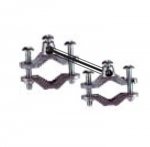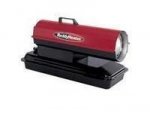So at the end of the day do we need to use 90.4?
NO! this section is not enforceable.
If you HAD to decide bond or not bond?
Mr. Rorro asked the same questions I hear a lot, ?What is the primary objective? Is it insuring that the components of the piping system are at the same voltage level? Or, is the purpose of the bonding jumper to carry fault current to trip a breaker??
Once these questions are answered then we can come up with an answer for, ?If you HAD to decide bond or not bond??
I have done enough residential renovation work to know that just about every metal piping system out there has some sort of non-metallic repair somewhere in the system just as when the plumber fix our ice maker he did it with CPVC piping. Now my water piping system will not carry any fault current and over 70% of it is not conductive to the bonding conductor that was installed when the house was first wired. Let me also say it is not something that I worry about either.
This is not so much a problem when working on commercial or industrial piping systems as in most cases the repairs are done with the same type of piping that is there. This is why Mr. Rorro used the water heater that he used in his article, a water heater in a commercial building.
But
The question still remains the same. How is my water piping system going to get energized with the same amount of current that is used to figure my service calculation?
In my honest opinion I think that everyone should be given a pick, shovel, rope, and a bucket and told, ?go ye therefore forward and seek water? until this debate can be settled.
I had a student that was seeking his NC electrical licenses that had worked up north and went school up there. He was of the opinion or should I say he had been taught that the purpose of bonding metal water pipes had to do with someone losing a neutral. After spending some time down here on the side of one of these hills he learned that there are still a lot of people in this world who think of running water as being the one carrying the bucket trying to get back to the wood burning stove to get warm.
I can?t help but wonder what 3000 amps of current would do to ? and ? copper pipes. 3000 amps for .033 seconds (two cycles) and the copper is coming apart. I have a 300 amp service 10 times 300 equals 3000. Using this water pipe for fault current based on the service conductors is nothing short of joke.
Due to a question from a student I started a thread concerning Teflon tape and RMC. I will agree that if the metal piping system is steel pipes that are threaded then we won?t be faced with the leaking joints after a high fault current but I know from experience that it don?t take a lot of heat to spring a leak on copper. If the plumber uses too much Teflon tape on each of the couplings then there will be enough of a voltage drop across the metal water pipe that using it as a fault path is again nothing short of a joke.
Ever hear of using a welder to thaw frozen pipes? Well I am experienced at it in my barn and yes I have left it on the pipes long enough to spring leaks but at least those swayed backed hay burners had water to drink. This little trick also has taught me just how ridiculous using copper pipes to carry the fault of a service.




